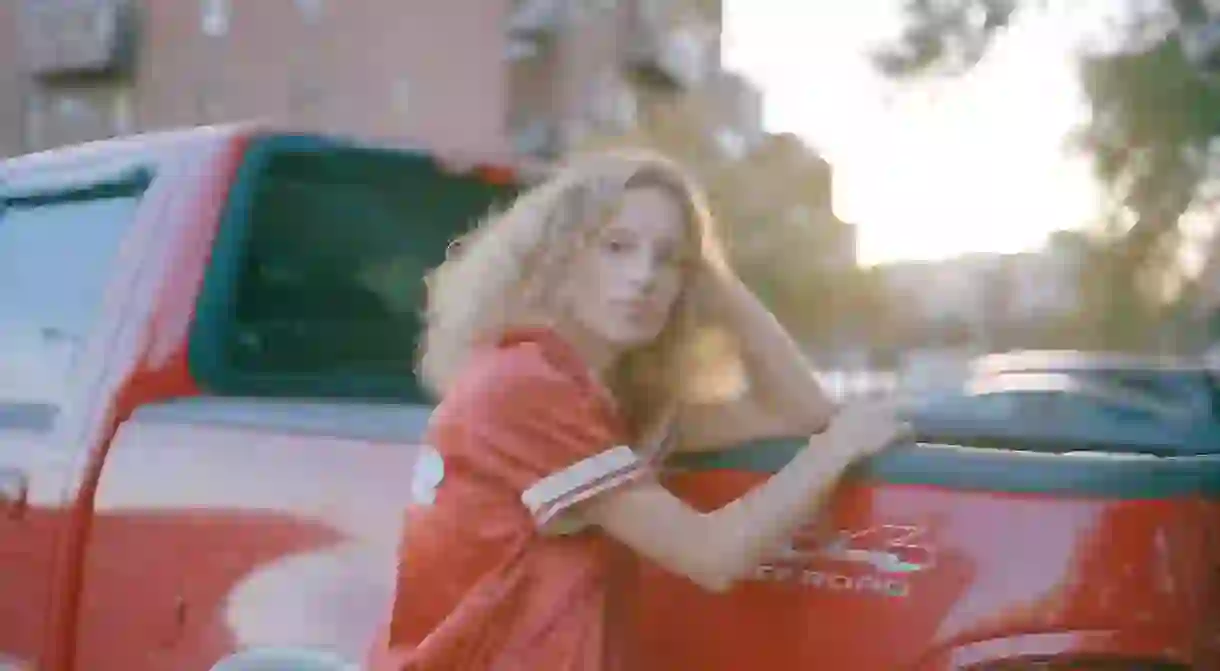Petra Collins On Girl Gaze, Gucci, and Gender Politics

Petra Collins embodies the millennial “It Girl.” She’s edgy, she’s elusive, and as both a photographer and model, she proves that a woman can possess her own gaze while being gazed at by others.

Tapped by Gucci creative director Alessandro Michele to model in the brand’s Autumn/Winter 2016 campaign, Collins is now embarking on a new, undisclosed project with Gucci alongside Hari Nef (trans model and icon) and Dakota Johnson (of Fifty Shades fame). Whatever Michele has in store for this trio of talent is certain to be spectacular, not only for Gucci, but for the legion of fans Collins has amassed in her short time in the spotlight.

The 24-year-old Toronto native, who now calls New York home, is known for her dreamy, 1970s aesthetic — mainly because she shoots exclusively on a 35mm film camera — and though her photographs have a palpable femininity, don’t for one moment mistake them as fragile representations of the female form. In fact, Collins has made a name for herself by subverting patriarchal ideals about beauty. In 2013, she posted a picture of herself in underwear with an unshaven bikini line. Instagram promptly deleted her account. To counter this move, Collins penned an op-ed in The Huffington Post, writing, “The image I posted was from the waist down wearing a bathing suit bottom in front of a sparkly backdrop. Unlike the 5,883,628 (this is how many images are tagged #bikini) bathing suit images on Instagram (see here and here) mine depicted my own unaltered state — an unshaven bikini line.” She goes on to speculate that even though the post contained no nudity, violence, or infringing imagery, “What I did have was an image of MY body that didn’t meet society’s standard of ‘femininity.'” She concludes her op-ed by asking readers to consider why this image was offensive, shocking, and ultimately censored.
💒
A photo posted by Petra Collins (@petrafcollins) on Dec 13, 2015 at 9:19am PST
Since 2013, Collins has been prolific as an artist and subject. In 2015, she published a photography book, Babe, named as one of the best photography books of 2015 by The New York Times. Additionally, she’s exhibited her photographs all over the world, with shows in New York, San Francisco, Los Angeles, and Milan. Most recently, she showed at Art Los Angeles Contemporary, represented by San Francisco gallery Ever Gold. I took this opportunity to speak with the shy yet savvy Collins on the landscape of femininity, as represented in fashion and photography.
Jill Di Donato: Your photographs, from the infamous underwear shot that showed pubic hair, to self portraits with acne, are essential to a dialogue on the landscape of female beauty. How do you see your photographs fitting into that landscape? All women have pubes and zits, but in a culture when we document everything, why are people still so offended by what I call the messy experience of being human? How do you see the tension between selfies and self-loathing existing?
Petra Collins: We are so accustomed to the sterile white young female body. It is the only way femininity is presented in the western world. This is changing rapidly though through alternative imagery, and I think it’s important that we keep creating these images and adding them to our world.
JDD: Talk about what it’s like to be part of Gucci’s ad campaign. Did being tapped for this campaign change your self-perception at all?
PC: It was surreal and fun. I’m a huge fan of Alessandro [Michele], and it was super cool to be part of a campaign and a brand that creatively aligns with me. I tend to not like being in front of the camera, even though I do it a lot. It usually makes me hyperaware of myself, which I don’t love, but it does help me understand my subjects more. [Beyond the campaign] I’m going to continue to work with Gucci.

JDD: You move fluidly from behind the camera to in front of it. What’s it like to model having been a photographer, and to photograph models with your experience as a model yourself?
PC: I think its super important to know what the other side feels like. My images are all about getting into my subject’s heads, experiencing their world and connecting it with mine. Being in front of the camera gives me that awareness—I know what it feels like, and know what will make someone comfortable.
JDD: You shoot exclusively on 35mm film.
PC: It’s what I learned on and what was the most inexpensive for me as a student. I also come from a dance background, so for me, physicality is important. 35mm is tangible to me: the whole experience of taking the photos to holding the finished negatives are key to my process. I love having to really focus on each photo I’m taking (because of how much film I have).
JDD: How do you see the intersection of fashion and art evolving in your work and as an industry?
PC: Anything I do and with any medium, I always approach in an artistic manor. I am an artist, and that is the lens with which I see the world. So when I do fashion, it’s just an extension of that. Fashion is fun for me because it gives me a space to experiment with new things, new sets, new cameras, and those experiments usually spill into my personal works.














